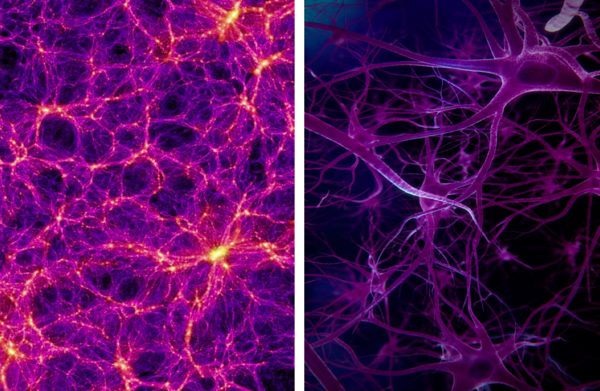Canadian Science at AAAS

SNOLAB recently took part in the Annual Conference hosted by the American Association for the Advancement of Science, the world’s largest multidisciplinary scientific society and a leading publisher of cutting-edge research through its Science family of journals.
Along with the Perimeter Institute, TRIUMF and Canadian Light Source, SNOLAB hosted a media panel to offer a glimpse into the big stories on the verge of making headlines from Canada’s Big Science Laboratories. The session provided an advance glimpse into: the amazing possibilities of precision and personalized medicine with isotopes, synchrotron techniques that will help humanity adapt to the food security issues related to climate change, the effects of low-radiation, below natural background levels, on biological systems and how physicists can unite theory and experiment to “piggyback” on existing technology to make profound discoveries.
Dr. Avery Broderick presented journalists with an overview of the Event Horizon Telescope (EHT); the global array of interconnected telescopes will be fully online this April, and is expected to soon obtain humanity’s first image of a black hole, probing fundamental questions of space-time in the process.
Food security was next, provided by Dr. Chithra Karunakaran. An agricultural engineer by training, Dr. Karunakaran is the manager for the Environmental and Earth Sciences sector at the Canadian Light Source (CLS), and leads the CLS plant imaging and innovation research program, promoting the innovative use of synchrotron techniques for agricultural and food sciences research. Dr. Karunakara was able to demonstrate how she uses real-time imaging to follow the water and nutrient uptake by plants.
During his talk, Dr. Paul Schaffer, Associate Lab Director – Life Sciences Division at TRIUMF described how some radioactive waste was actually a rare and potentially cancer-destroying medical isotope. In response to the 2007-2009 Tc-99m supply crises, Schaffer and his collaborators spearheaded one of four successful efforts to establish proof of concept commercial-scale production of Tc-99m. Dr. Schaffer explained the use of accelerators as an alternative to reactors and how Cyclotron-based 99mTc production will enter clinical and commercial arenas soon.
Finally, Dr. Erica Caden, research scientist at SNOLAB talked about upcoming publications for the SNOLAB dark matter and neutrino programme, but she also spoke to a new science thread at SNOLAB; genomics and bioinformatics. It is well known that high-doses of ionizing radiation are harmful to living systems, however, at low-doses the effects remain poorly understood; there is growing experimental data to suggest that low-dose radiation can have beneficial biological effects. The REPAIR project, run by the Northern Ontario School of Medicine and Laurentian University, is currently examining the biological effects of prolonged growth and development in SNOLAB. It is hypothesized that organisms have adapted to oxidative stress produced by natural background radiation, which promotes and maintains DNA stability, and that removal of background radiation will be detrimental to living systems.
Fruit flies may not be the first thing that comes to mind when you think of a lab focused on sub-atomic particles and located two kilometers underground, but recent work from Laurentian University’s Thomas Merritt may change that. Merritt’s research group uses flies to study genetics and metabolism and has recently turned their attention to the effects of working in a mine, specifically working deep underground. The unique features that make SNOLAB an ideal location for studying subatomic particles, a controlled environment deep underground, also make it an ideal location for studying the biological response to pressure.
Along with the physics and astronomy, AAAS featured a wealth of fascinating science that showcased what scientists are working on around the world. From telescopes to bees, space weather to microbes trapped in crystals, quantum computing and gmo’s, science policy and everything in between, AAAS brought together thousands of scientists, journalists, and policymakers all with the common goal of science.
You can find more talks from the conference available here:
http://meetings.aaas.org/program/remote-viewing/
For more information, please contact:
Samantha Kuula
Communications Officer, SNOLAB
Samantha.Kuula@snolab.ca
(705) 692-7000 x2222